Photosynthesis: Blending Humans and Plant Textures In-Camera Posted On 29th April 2021 To Magazine & Alternate

Urban Lives and the Natural World
I've been living in some of the giant Asian metropolises for close to a decade now, and it has oriented my recent photography work towards exploring the distance between our urban lives and the natural world. One way I have found to express this has been through film double exposures where I try to blend portraits and plant textures. After 2 years of work on this, it became the Photosynthesis project.
There's a little bit of history in this direction with work from great photographers such as Harry Callahan, Edmund Teske and Jerry Uelsmann. Most of them tended to blend images in the darkroom however, and I wanted to blend them in-camera as much as possible. I had to overcome a couple of technical challenges to do so and achieve what I wanted.
Hurdles
The main hurdle was one of process. On most film cameras that offer double exposure capability, you must shoot the two superimposed frames one after the other. Since I had full white backgrounds in mind to ensure subject separation, there was no practical way of doing this. Shooting an entire roll of textures and then superimposing an entire roll of portraits would create issues with frame alignment. Finally, I realised that because the Hasselblad XPAN I owned wound the entire film in before shooting, the starting point of the roll was always the same. A couple of tests showed that indeed frame alignment was ensured by this. So that became my process : I shoot an entire roll of textures (usually underexposing them by a stop), then do a studio session with my models where I shoot the same entire roll again.
Film choice
I tried various film stocks (both black and white and colour) and found that ILFORD FP4+ was reliable and delivered nice, consistent results. I've used it nearly exclusively except in the early months of the pandemic when it became tricky to find Ilford film here in Hong Kong. I noticed that some of the cheaper film brands didn't ensure frame alignment as consistently, probably due to more extensible film materials. In recent months, I focused exclusively on black and white. Colour can deliver some really interesting results, but the focus is not so much on texture, so I decided to shelve that for later.
The important thing to understand about the double-exposure bit of the technique is this: In double exposure, an overexposed white area in one of the frames (like a blown sky or a white studio background) will erase most of the second exposure. Conversely, a dark area in one of the frames will let the second exposure shine through. Mid-tones tend to blend into each other.
Experimentation
After a bit of searching and experimentation, I've so far explored four types of images in this project :
- First is what I'd call "full texture". It works really well with leafy plants that have mid-sized leaves with jagged shapes, lots of veins, and/or contrast, like Coleus, Aluminium plant or Dieffenbachia. In this approach I underexpose the portrait slightly on a blown white background, or light it such that there are large shadow areas. That makes the texture pop, as in Fractured Silhouette here.
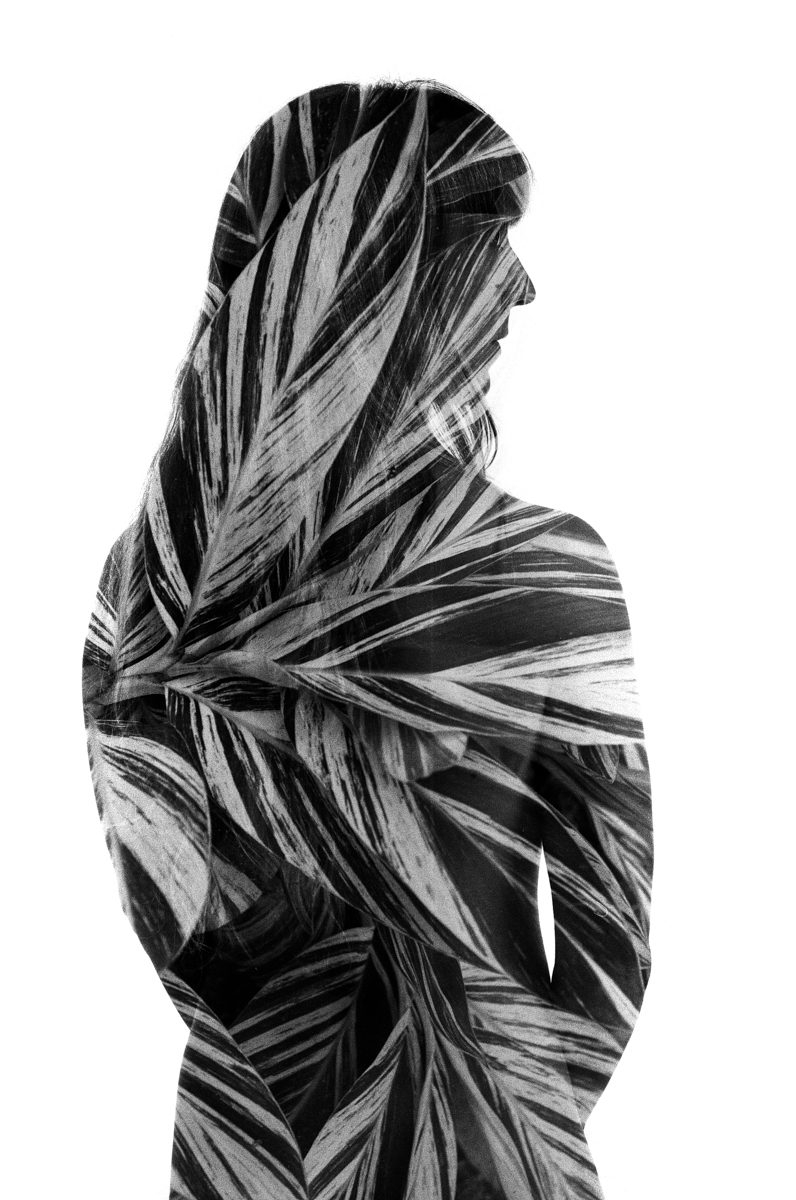
- Second is what I call "dark emergence". It's kind of the opposite of the previous one. Instead of shooting on a white background, I shoot on a black background. As a consequence the texture is everywhere except on the subject (or less on the subject), which seems to emerge from the background. It works well with busy backgrounds with different textures, like flower beds. See Briar King for an example.
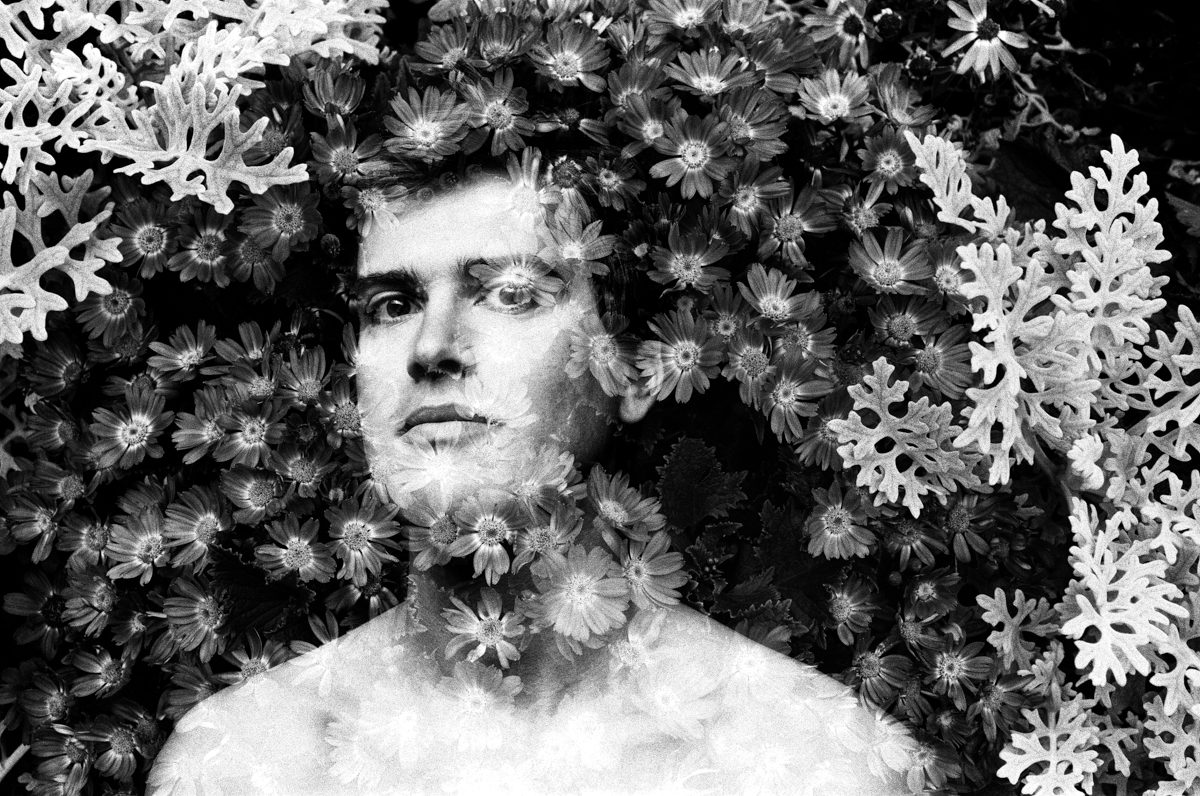
- Third is what I call "branches and leaves". This focuses not so much on texture but on shapes and patterns. The superimposition of branches on skin can have a tattoo like look, or more of a fractal effect as the light peeking through the branches blows parts of the portrait.
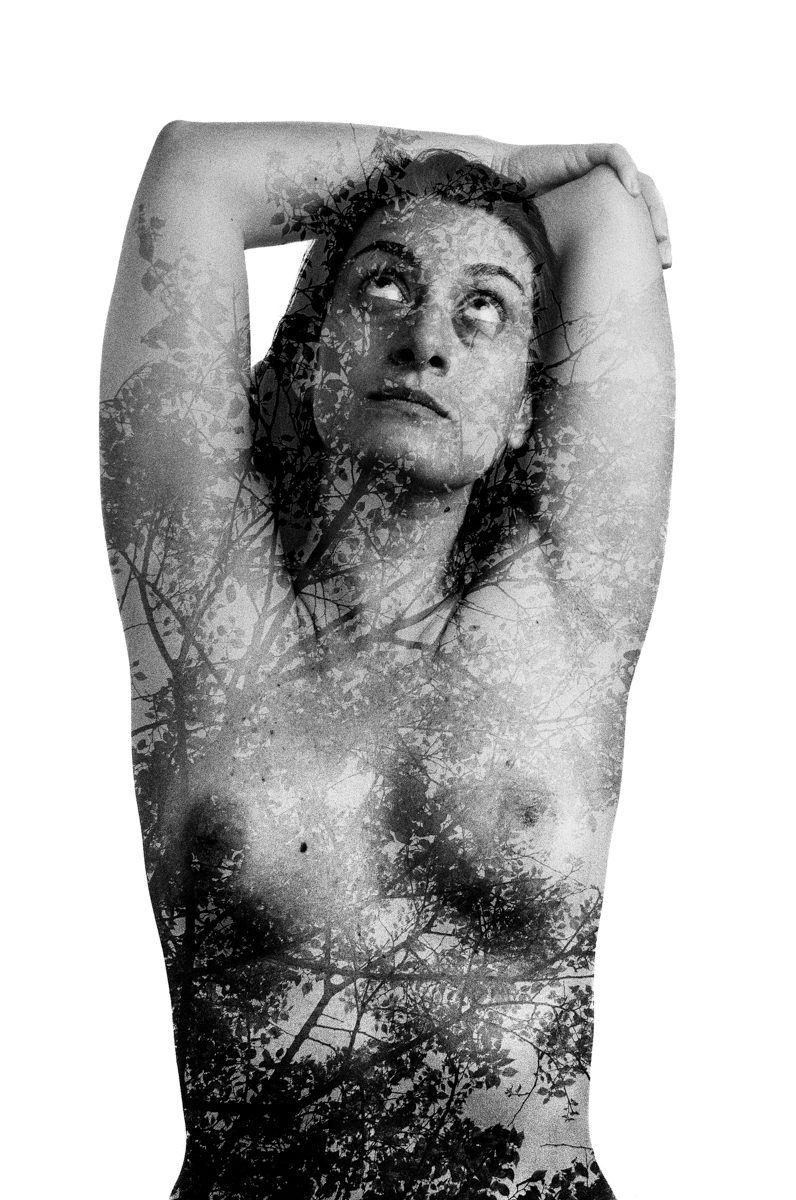
- Fourth is an extreme but really effective offshoot of the previous one which I call the "inverted treetop". When I shoot the textures, I shoot the tops of trees upside down. When superimposed with the portrait, the blown sky erases the bottom of the portrait, which makes the silhouette taper in a jagged way (or creates more random effects of partial erasure). Crooked Elbow is a good example of this.
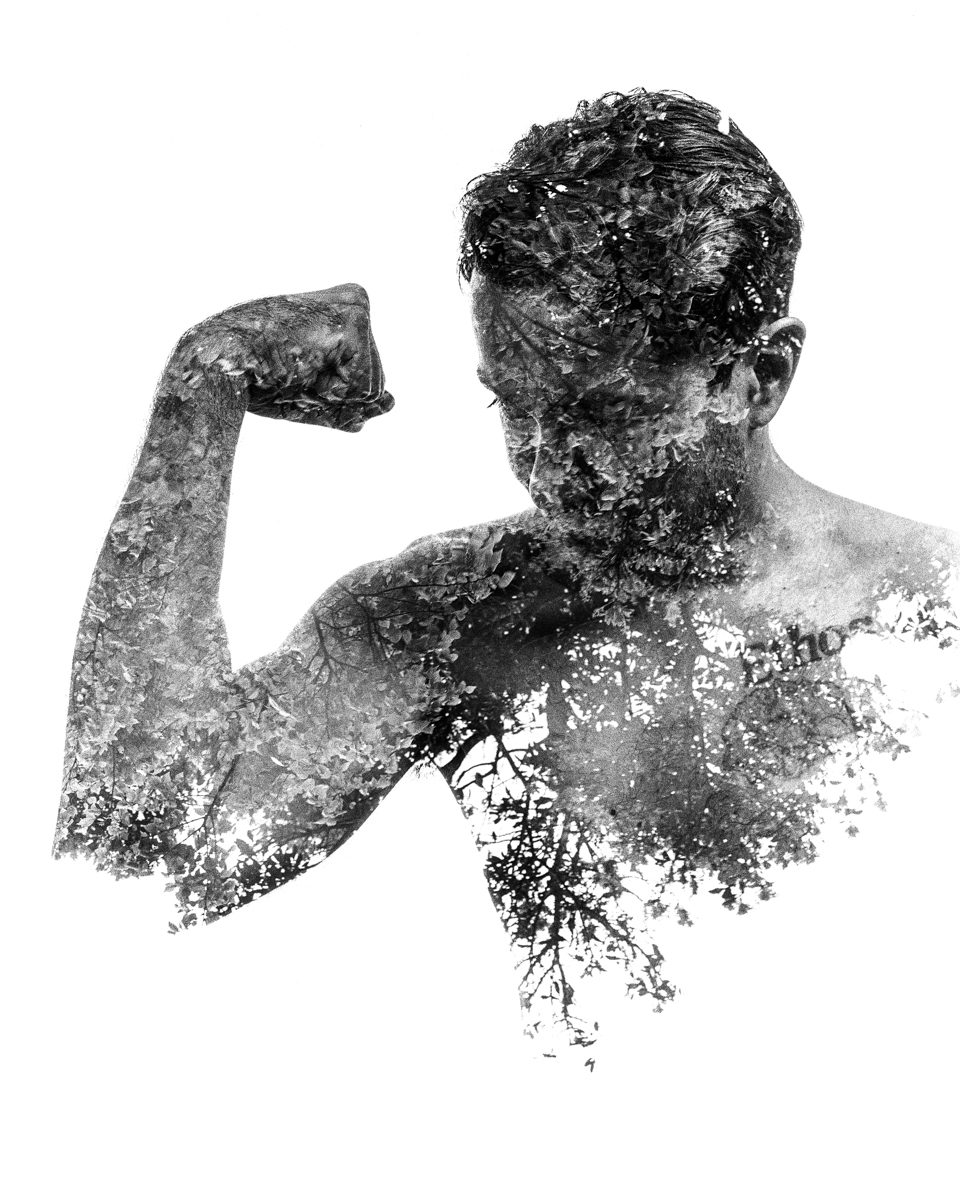
More to explore
It's been a really enlightening project to work with, and I'm only a small bit of the way into it. There's a lot more I want to explore : a wider variety of textures, a wider variety of skin tones, macro shots of textures (or of quasi abstract body parts). I also intend to try this with large format photography which does not have any frame alignment issue.
Output
One important aspect of the Photosynthesis project is the output. I love the black and white images, and have printed some of them in the darkroom to great effect. I've even worked on a self published book also entitled Photosynthesis. But I realised about a year ago that one really cool output for this could be cyanotype printing. There's plenty of reasons why cyanotype makes sense for these images : first, cyanotype is revealed by sunlight, just like the plant textures I focus on. Second, the dreamy output that cyanotype delivers works fantastically with these blended images. Last and not least, the first cyanotypes published in the history of photography were the algae and plant textures of Anna Atkins from 1843 onwards.
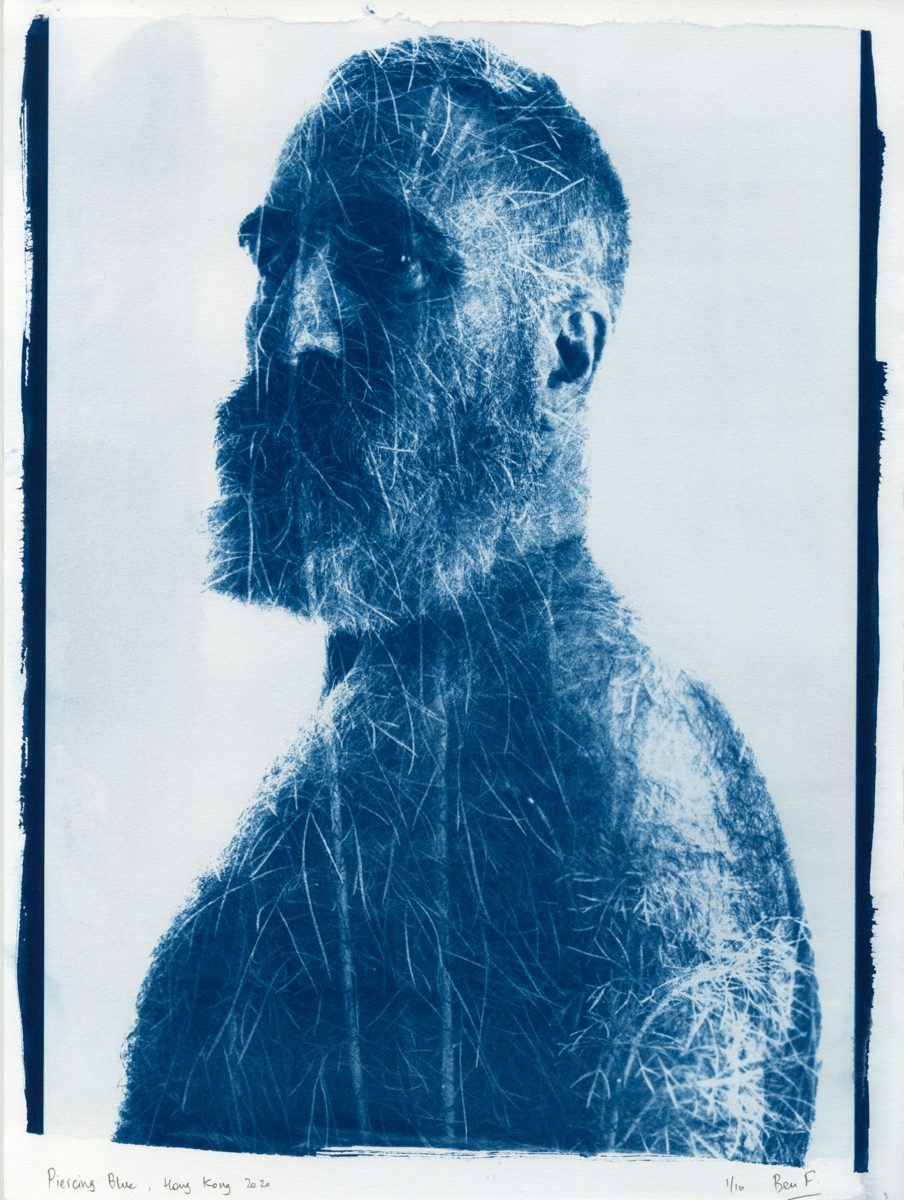
So cyanotype has become a bit part of the process now, and has led to the project being exhibited as part of a multi-artist exhibition exploring nudes at the Blue Lotus Gallery in Hong Kong. I'm hoping for more galleries to pick up this work as its visibility increases.
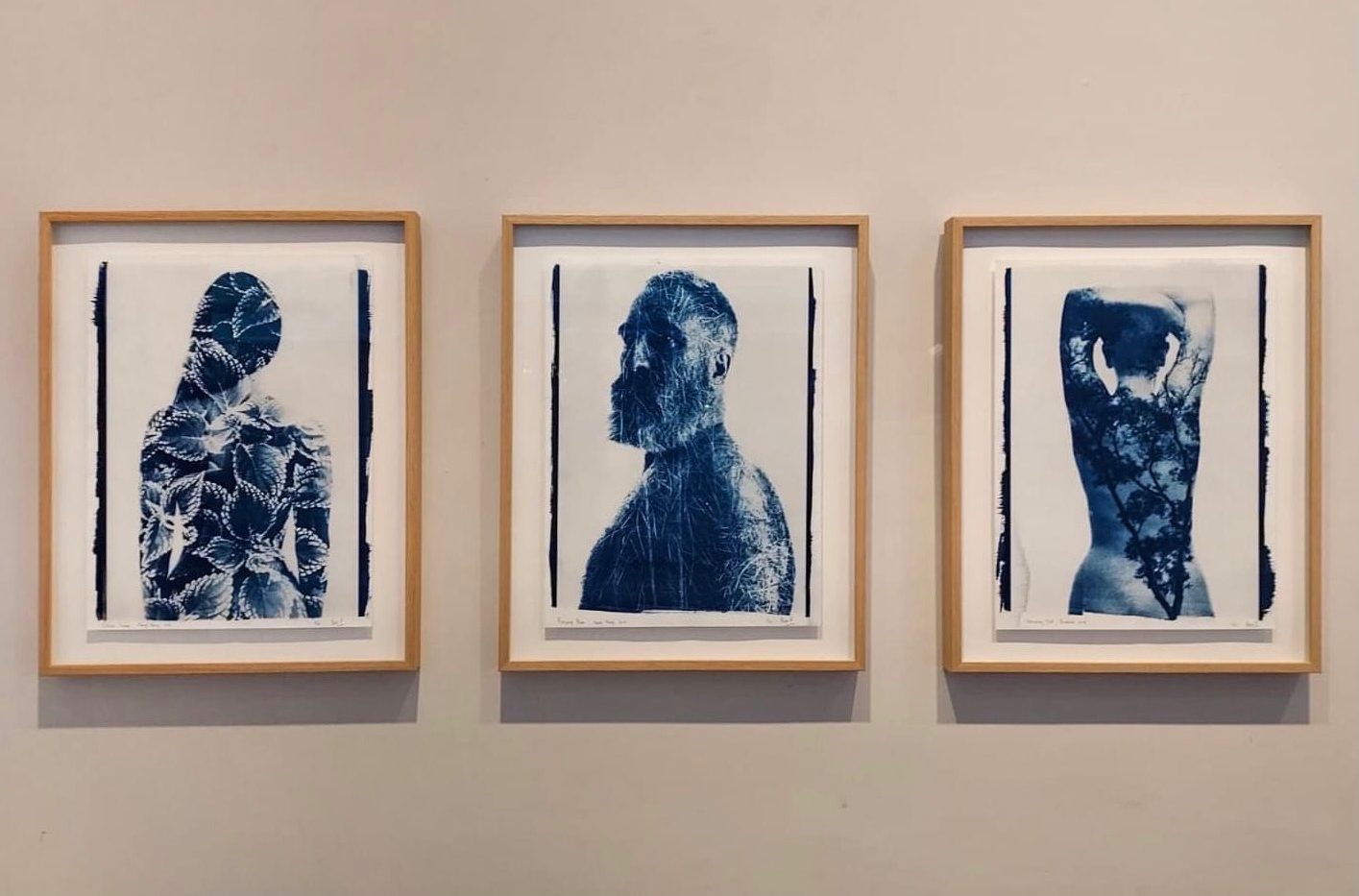
A path not well trodden
To me personally, this project has also acquired a deeper meaning. I feel like I've found a path, one that is not well trodden and where technique and inspiration allow me to produce images that look distinctive and seem to move people. And very importantly, these images happen organically, not through an intellectual and technical process delivered on a computer. I'm often asked why I don't do this in photoshop. I could if I learned how to. But I choose not to. I would lose this organic approach that I love so much, and I would lose the randomness that has delivered so many amazing accidents since I've started down this path.
I choose to embrace a relative measure of chaos. It doesn't always work, but when it does, I'm reminded how flexible the medium of film photography is and why I love it so much.
Photosynthesis from Michele Galeotto on Vimeo.
Images ©Benoit Felten
About The Author

Ben Felten
Photo @Matthew Irving.
Ben Felten is a French born photographer living in Hong Kong. He started his photography work 15 years ago shooting jazz musicians in small Parisian clubs. When he moved to Asia in 2014, his work shifted towards street photography using a panoramic film camera. This led him to exploring the more unusual features of film photography, including double exposures. He was also commissioned to illustrate a couple of large format books, Dreamhounds of Paris (2014) and Unknown Armies (2016). This led him to perfecting his portraiture work, and in 2018 the double exposure and portrait threads merged into the Photosynthesis project. This in turn rekindled his love of cyanotype printing which he’d dabbled in 10 years earlier. In 2020, he released a zine of his panoramic street work called Colours of Shanghai.
Follow Ben on Instagram or Twitter






